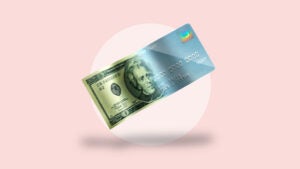Poll: Majority of subscribers experience unwanted charges




Have you ever been hit with a surprise credit card charge for a streaming service, meal delivery kit or treat box for your dog? You have plenty of company, according to a new Bankrate survey.
With many consumers juggling multiple video streaming services and other subscriptions, surprise charges on credit card bills are now common. Bankrate’s survey of 2,497 U.S. adults found half (51 percent) of U.S. adults who’ve had a subscription or membership account incurred unwanted charges at some point.
These stealth charges can easily happen if you accidentally join a service, forget to cancel a free trial or pay for an annual membership that automatically renews. Such charges can add up, especially if you don’t spot them immediately. A survey from Chase found 71 percent of Americans waste over $50 a month—that adds up to $600 a year—on unwanted subscription fees.
This happened to Ann Martin, director of operations for CreditDonkey. She was subscribed without her knowledge to a $10-a-month makeup club. The product wasn’t arriving at her home, so it took a while to spot the charges. Martin contacted her credit card company and got the more recent charges removed, but was stuck paying some older charges.
“That one’s on me for not noticing it more quickly, but I was very pleased with my credit card’s response to the issue,” she says.
Younger consumers hit harder by recurring fees
Millennials and Gen Zers are the two generations that bear the brunt of the problem of unexpected subscription charges, the poll found. More than half of those under age 42 said they’ve dealt with unwanted recurring charges:
- Millennials (ages 26 to 41) – 58 percent
- Gen Zers (ages 18 to 25) – 57 percent
- Gen Xers (ages 42 to 57) – 48 percent
- Baby boomers (ages 58 to 76) – 45 percent
- Silent generation (ages 77 and up) – 43 percent
Why? It may be because younger consumers tend to subscribe to more services with recurring charges. A recent PCMag survey on subscription services by generation found 80 percent of Gen Zers subscribe to four out of five common subscription categories: video streaming, music, food, miscellaneous (such as clothing or VPN subscriptions) and beauty/wellness, compared to two types for Gen Xers and one type for boomers.
The survey also found certain types of subscriptions are more popular with Gen Zers and millennials than older generations—for example, gaming subscriptions, subscription apps, subscription boxes (BarkBox, Dollar Shave Club, Stitch Fix, etc.), food delivery and meal kits (Blue Apron, HelloFresh etc.). But shopping subscriptions and membership organizations count more Gen Xers and boomers as customers.
The Bankrate survey found recurring charges pose a problem across all income levels. These charges affect almost 6 in 10 (59 percent) households making $100,000 or more a year, the poll found, as well as 51 percent of households earning $50,000 to $99,999 and 49 percent of households making under $50,000 a year.
“Unwanted subscription fees are a significant pain point for consumers,” says Bankrate senior industry analyst Ted Rossman.
Pandemic boosts surprise subscription charges
Video streaming services, subscription boxes and other services with recurring charges were gaining in popularity before the COVID-19 pandemic hit, but the pandemic may have had an “amplifying effect” on the issue of surprise charges, Rossman says.
The survey found half of consumers say they now subscribe to a video streaming service, and 41 percent have a membership to a shopping service such as Amazon Prime or Groupon Select. Other popular services include:
- Membership organizations (for example, AAA, Costco or a gym) – 31 percent
- Audio streaming (Apple Music, Spotify etc.) – 23 percent
- News (New York Times, Wall Street Journal, etc.) – 12 percent
- Gaming memberships (PlayStation Now, Xbox Live, etc.) – 12 percent
- Food delivery (DoorDash DashPass, Instacart Express) – 10 percent
Of those hit with unwanted charges, 55 percent had this occur before the pandemic and 45 percent had this happen since the COVID-19 pandemic was declared in March 2020—a significant percentage within a much shorter time frame.
During the pandemic, many consumers signed up for food delivery services and also “sewing classes online and things like that to help them weather the pandemic,” says Linda Sherry, director of national priorities for Consumer Action. Then, she says, many never canceled or just forgot they had signed up in the first place.
“It’s no surprise that people are paying for things they don’t want or use,” she says.
Canceling unwanted subscriptions isn’t always easy
Many companies are intentionally making it harder to cancel a subscription, says Joshua Browder, CEO of DoNotPay, which helps consumers fight unwanted charges and other problems. For example, he says, Netflix has a “no refund policy,” Hulu takes away the remainder of your free trial period if you cancel early, and some gyms make you show up in person to cancel.
The survey found 34 percent of consumers who have a subscription or membership account say it’s difficult to cancel or turn off automatic payments. Of these, 10 percent say it’s very difficult.
Generally, older generations tend to find subscriptions more difficult to cancel. The following percentages of each generation say it’s very or somewhat difficult to cancel a subscription service or membership, the poll found:
- 41 percent of boomers
- 33 percent of Gen Xers
- 32 percent of Gen Zers
- 28 percent of millennials
The good news: Visa and Mastercard have both introduced “consumer-friendly policies” that require merchants to more clearly disclose free trial and recurring payment terms and instructions on how to cancel, Rossman points out. Still, not all businesses follow the rules.
How to avoid unwanted credit card charges for subscriptions
Want to avoid falling victim to surprise subscription charges? Here are five tips on how to avoid this common trap:
- Track your subscriptions. Go “old school” and use a spreadsheet or similar tool to track subscriptions, Sherry recommends. Record when and how you signed up. For example, did you buy a streaming subscription directly or within your Amazon Fire Stick or Roku? Recording this information can help make it less frustrating to cancel, she says.
- Avoid the free trial trap. Signing up for a free trial? Set up a calendar alert to ping you a few days before the trial ends. Or use a virtual credit card for free trials, Browder recommends. You may be able to set a custom expiration date before the free trial ends so the company can’t charge you.
- Turn off auto renewals. Did you pay for six months or a year of a service you actually do want, like a weight loss plan or a meditation app? Turn off auto-renew so you don’t get surprised with a big charge months down the road. You may be able to do that within your subscription account (just as one example, Lumosity offers instructions for turning off auto-renewals.) Or you could pay using a payment service like PayPal, then log into that account to turn off permission for future charges.
- Use tools from your credit card issuer to manage subscriptions. Chase has introduced a new tool that lets you easily track where your credit card information is saved. And the Capital One Eno browser extension allows you to get a reminder before a free trial expires. “Start with your bank or credit card and ask what tools are available to you,” Sherry says.
- Try to get the charge removed. Already got dinged? Try contacting customer service to see if the company will remove the charge. If they refuse, contact your credit card company for help. “Consumers may need to quickly go to their credit card company if there’s a problem,” Browder says.
It’s good to plan to avoid unwanted subscription charges now because it doesn’t look like the issue is going away any time soon. “With streaming platforms and other subscription services continuing to grow in popularity, this will remain a key issue for quite some time,” Rossman says.




